Written with Product Photography by: XEONIQ [ Instagram | Tumblr ]
Editorial Photography by: Keith Lo [ Instagram | Professional Website]
Contents
- Introduction
- Background on Final Home and the HOME1 Survival Parka
- HOME1 Survival Parka Features
- The HOME1 Compared to Modern Techwear/Outdoor Shells
- Summary
1. Introduction
Kosuke Tsumura’s iconic HOME1 survival parka under the “Final Home” label has enjoyed a recent resurgence in interest online despite the brand being defunct for nearly a decade.
I once owned a short version of the original HOME1 parka among a sizeable collection of outerwear from Final Home but had eventually sold all of them off as my style changed.
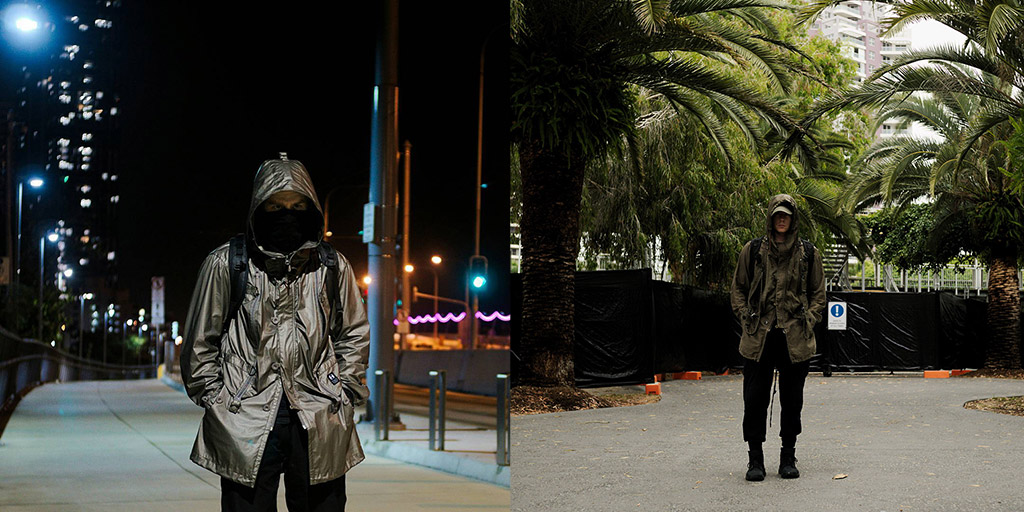
Over the years, I’ve received numerous questions regarding how well Final Home garments perform as “techwear”, typically in response to the oft re-blogged product shot I took below.
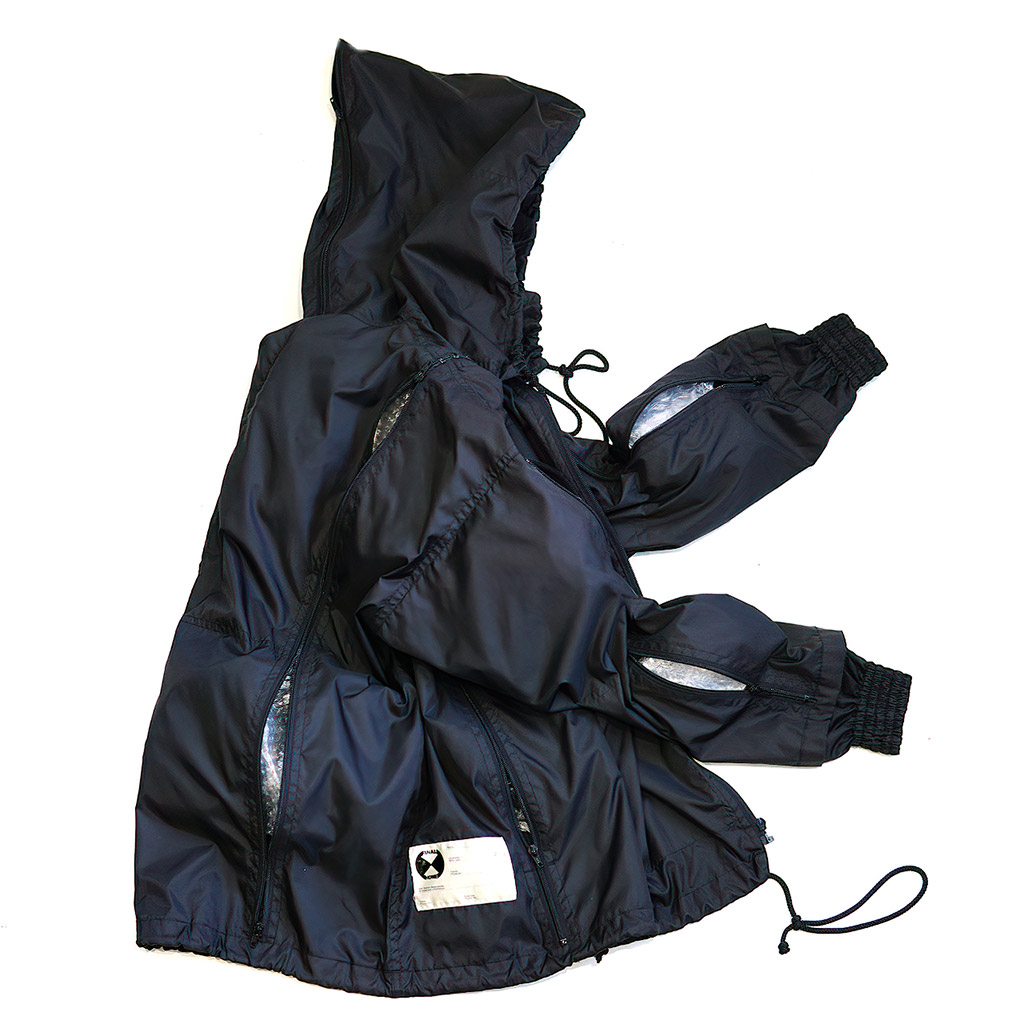
When I found an as-new condition long version of the HOME1 from the final run on Australia’s eBay earlier this year, I decided to purchase it for a Shell Zine article so that I could provide a more articulate response for those interested to read as an alternative to responding to DMs individually in short form.
Thus, rather than concentrate on yet another re-hash of the HOME1 concept (summarised only briefly in the next section), I will focus on how this 1990’s design, which perhaps could be argued to be part of the supermodern era of functional metropolitan fashion, stacks up against modern outdoor/tech jackets for casual urban use.
2. Background on Final Home and the HOME1 Survival Parka
Final Home as a brand and the HOME1 parka long version originated from a 1993 MOMA exhibit, where Tsumura was inspired by science fiction films such as Blade Runner and Akira (Shell Zine Cyberpunk Movie List) and the UK punk movement of the 90’s to create his nuclear post-apocalyptic simulation. The survival parka, which later became the HOME1 product, was envisioned as a practical, “do it all” outerwear that could be packed with newspaper for insulation, hold large amounts of medicine and supplies during a disaster and that could be comfortable enough to be worn in warmer months where the nomadic wearer would not have the luxury of seasonal wardrobe changes.
The popularity of the survival parka in particular led to Tsumura founding Final Home a year later in 1994 as one of the brands under the Issey Miyake umbrella, for which Tsumura was working as an assistant designer. The Final Home brand was mid-market as opposed to Issey Miyake mainline’s designer fashion segment, running for nearly two decades. A large number of garments and accessories were created, including several versions of the HOME1, and, a number of iterations of one of my favourite pieces: the fishtail parka (below). The designs often blended military design references and patterns with denim, plaid, and other casual details and trims to create a modern punk look that was accessible to urban consumers.
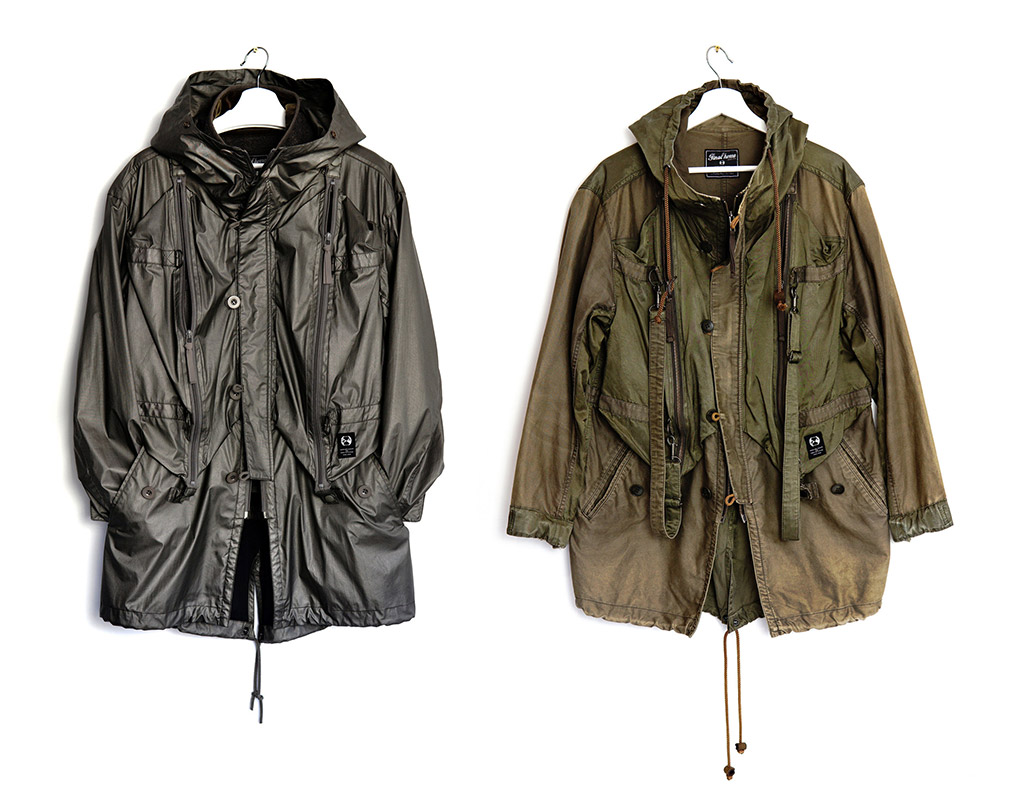
As the brand wound down and lost commercial viability, between 2012 and 2013, a limited run of Final Home t-shirts, accessories and both the HOME1 short and long version in orange, olive green and black were offered for sale directly on Tsumura’s website. The short version of the HOME1 sold for ¥17,900 (roughly $USD170). This last run of HOME1 parkas had two small nuances in design that differ from various versions released over the years including:
- A thick collar reminiscent of Issey Miyake’s designs that can stow the hood
- Chrome alloy snap buttons on collar-only for the short version and on both the collar and the placket for the long version
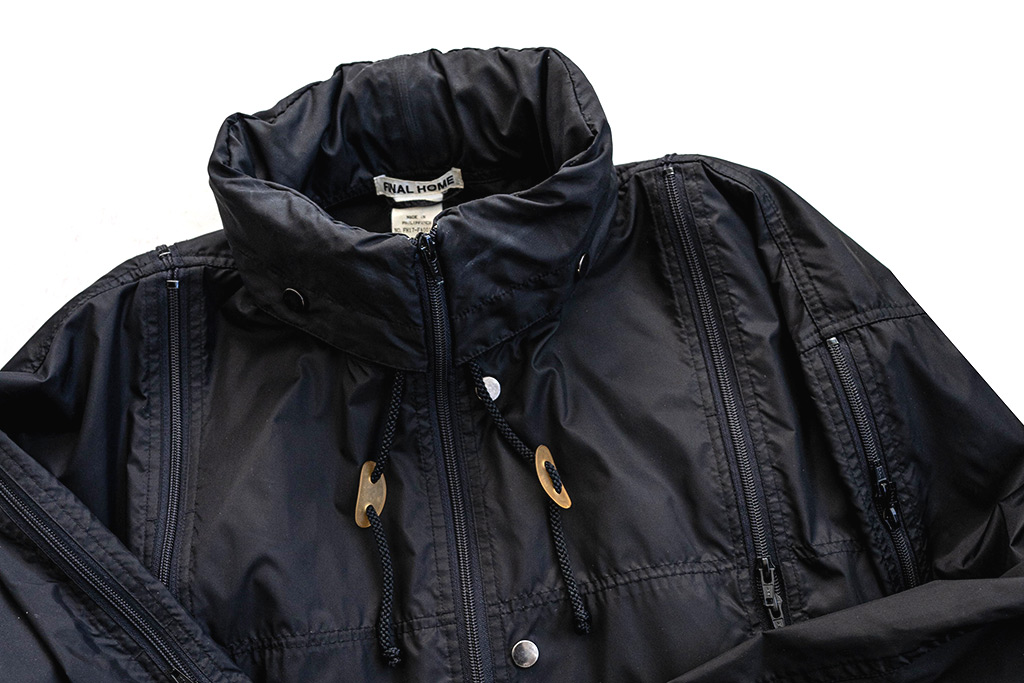
It was this final web-store version of the HOME1 which I was able to find in near brand new condition and that I’ll be using for my article.
More recently, the HOME1 has been photographed on innovative digital sound artists including Bladee and Yung Sherman, which has perpetuated the cultural relevance of the HOME1, if not Final Home as a brand, with fans seeking out the parkas as a form of “merch”.
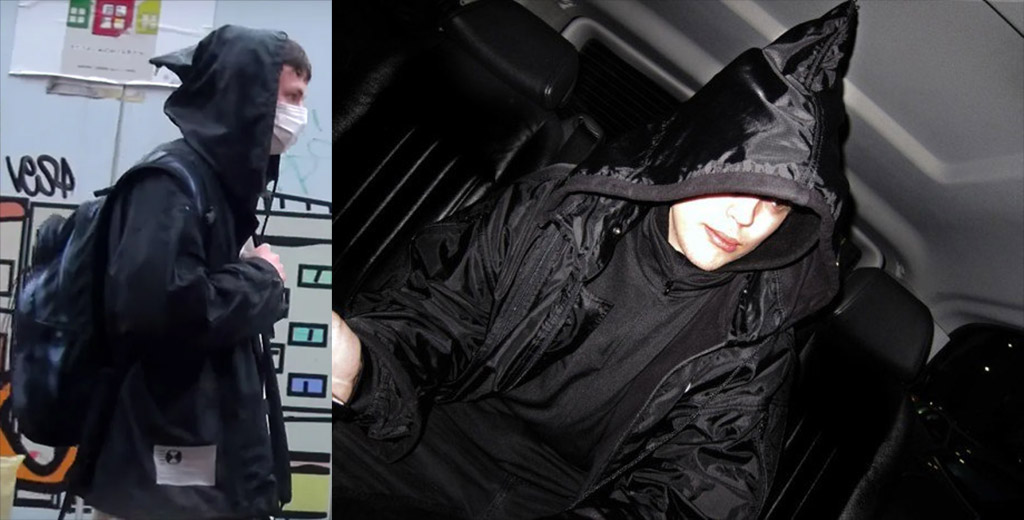
As of writing we are more than 18 months into a global pandemic and with ever-increasing restrictions on the average person by most national governments, the appeal of the HOME1 and Final Home’s post-apocalyptic narrative has been enhanced. This has also been aided by a surge in demand for nostalgic aesthetics and products (particularly 90’s and Y2K futurism) and for vintage or “archive” fashion in general.
3. HOME1 Survival Parka Features
The Final Home HOME1 parka has the following performance and utility-related features:
- Multi-layer 100% nylon construction
- Stowable snap-down hood with cord adjustment
- Numerous pockets on the upper and lower sleeves, the chest, the hip area and the back with two-way zippered access
- Internal pocket wells for valuables within the large storage compartments to provide stability for your carried items
- Two-way zippered front main closure
- Internal zipper placket with chrome snaps
- Elastic pleated cuffs
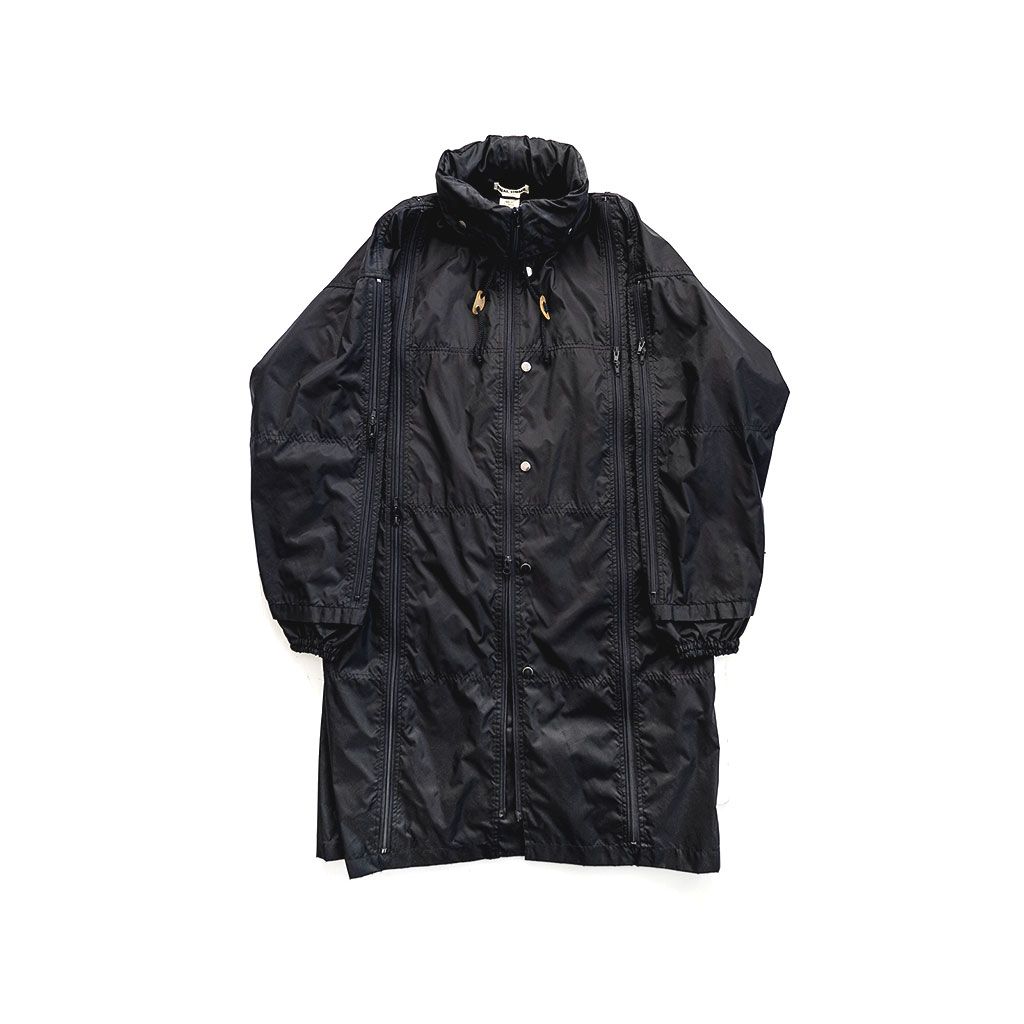
4. The HOME1 Compared to Modern Techwear/Outdoor Shells
I wore the HOME1 on a number of commutes over a period of several weeks, reflecting on how the parka performed in terms of comfort, weather resistance and utility.
4.1 Where the HOME1 is Competitive Relative to Tech Shells
In terms of weather resistance, the HOME1 performs very well despite it’s older design and use of basic Nylon as its primary textile. Would I bring this jacket out when commuting for more than an hour on foot when I knew it was going to rain heavily? No. Would I bring it on a long camping trip with a high chance of poor weather? Again: no. This is not an “outdoors” shell. However, will this coat hold up to light rain and strong wind and be suitable for urban use while out for a day? Definitely, yes.
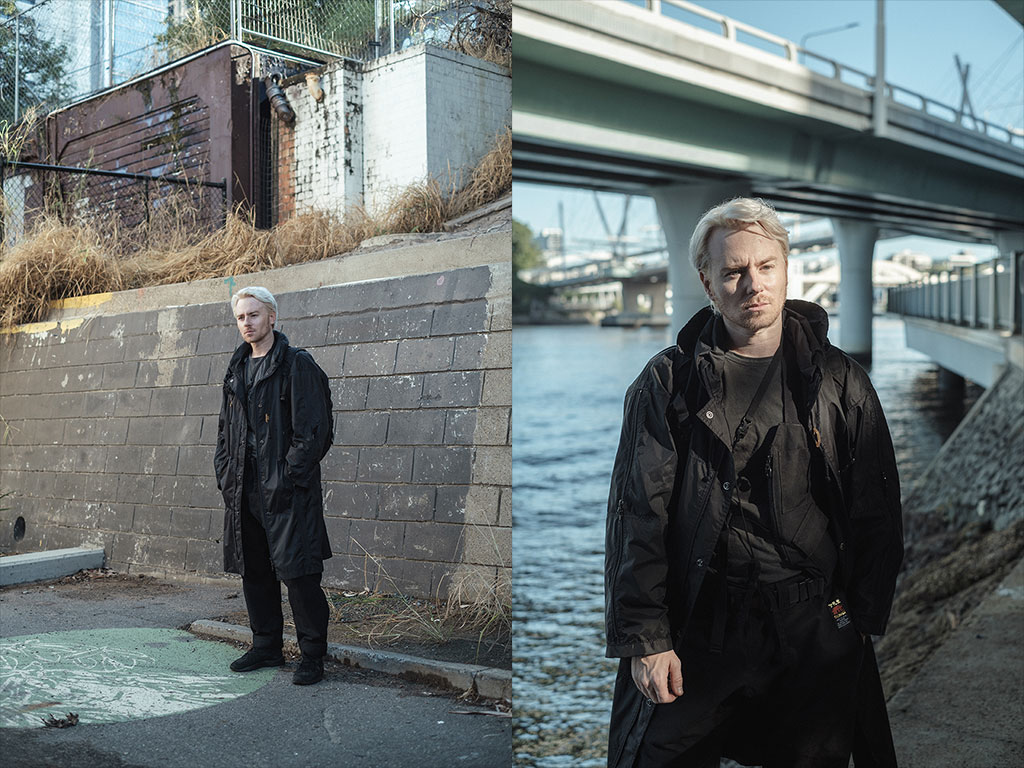
I’ve had garments made of Gore-Tex Windstopper and Schoeller Dryskin allow moisture to penetrate in under 10 minutes of moderate rain; and these materials are regularly utilised in high-priced techwear products for suggested use in urban contexts yet can’t provide what I’d consider sufficient commuter protection. The HOME1 outperforms garments made in such materials solely in terms of weather resistance simply because it is double layered with high density nylon. It is a solid jacket and only beat for weather performance by more purpose-specific rain shells, e.g. anything made from 3-L Gore-Tex.

The HOME1’s ability to provide modular volume adjustment by adding lightweight materials such as plastic or bubble wrap in a user-controlled dynamic arrangement is relatively unique bar a handful of Issey Miyake and ACG inflatable jackets I have encountered over the years. This silhouette modularity also typically comes with increased insulation, and again, most technical outers rely on a layering system instead with a shell and an insulating jacket beneath. If having just one coat that you can layer up internally for winter appeals to you, there are not many competing substitutes on the market in the tech niche.
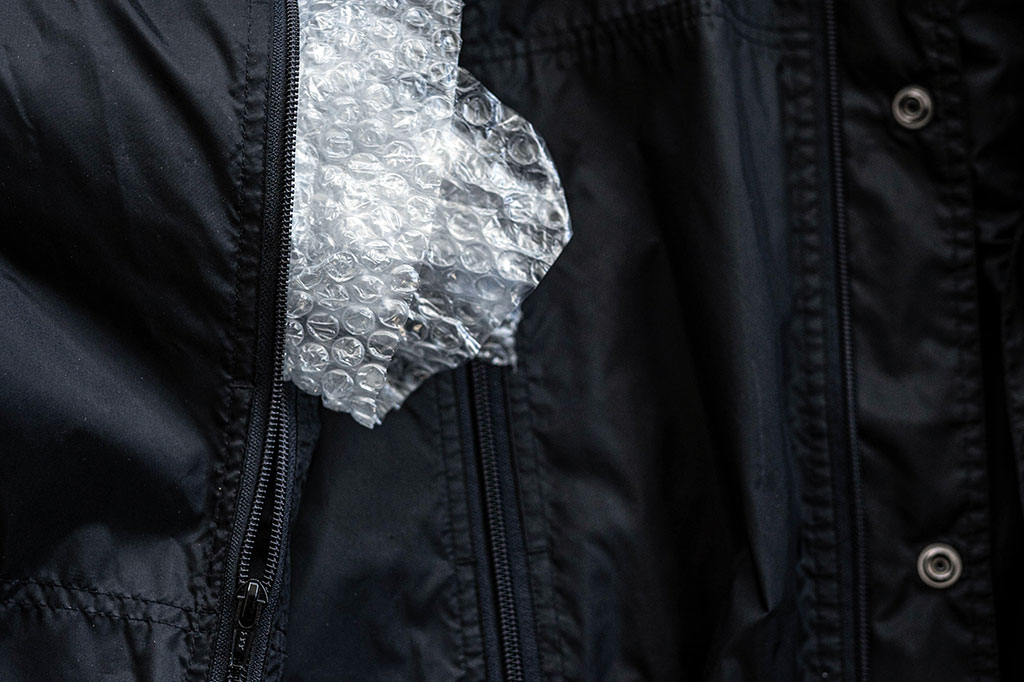
The storage abilities of the HOME1 is, again, at the upper end because there are zipper-accessible pockets almost everywhere and few techwear or outdoor alternatives exist that can match the sheer volume of storage capacity that this parka can offer.

4.2 Where the HOME1 Lags Behind more Modern Designs
There were several areas however that I felt the HOME1 was not as capable as more modern technical outers.

As already discussed, anything membrane is going to be more a more suitable choice than the HOME1 if you need heavy rain resistance from your jacket. Laminate-backed textiles are also going to easily out-perform the HOME1 and keep you dry longer as well. Whether you will be out in the wet for long periods of time and actually need this level of performance is going to depend on you though. If you only want to have one shell and you live in an area where it may rain frequently, the HOME1 will most likely not be adequate.
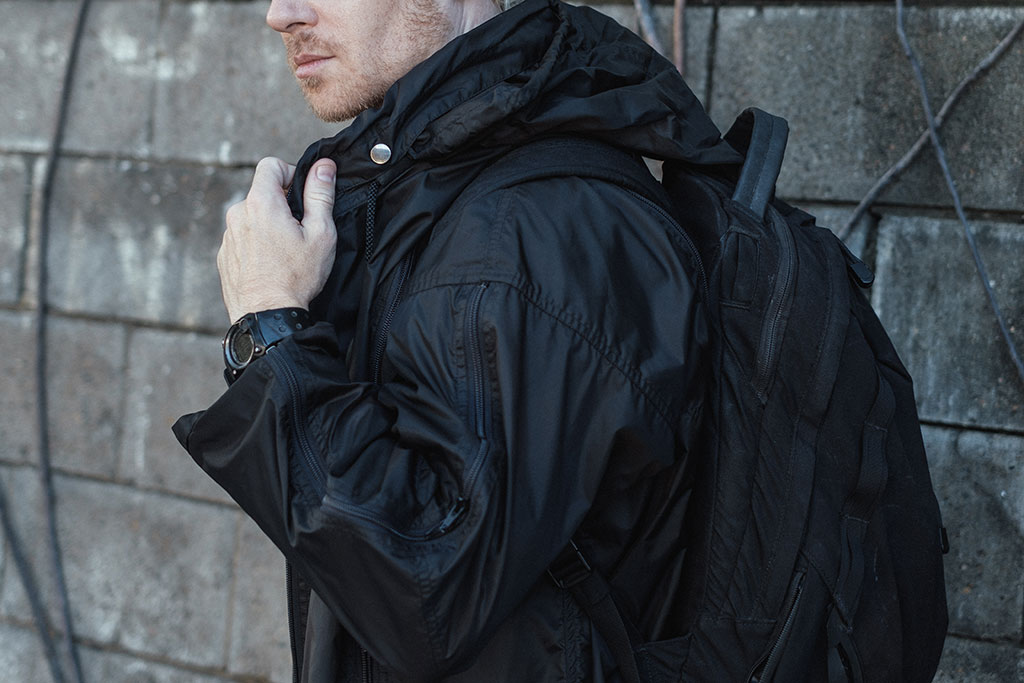
Secondly, the HOME1’s hood design has a very extreme aesthetic with its pointed top. While there is cord adjustment and the hood works better at staying on one’s head in a storm compared to non-adjustable hoods in techwear-branded jackets like the Alk Phenix Umbrella Coat (Shell Zine REVIEW), most outdoor shells have vastly superior designs in terms of adjustable fit, and in my opinion, aesthetic. Wearing this hood up while outside is not going to be for everyone compared to more mainstream designs.
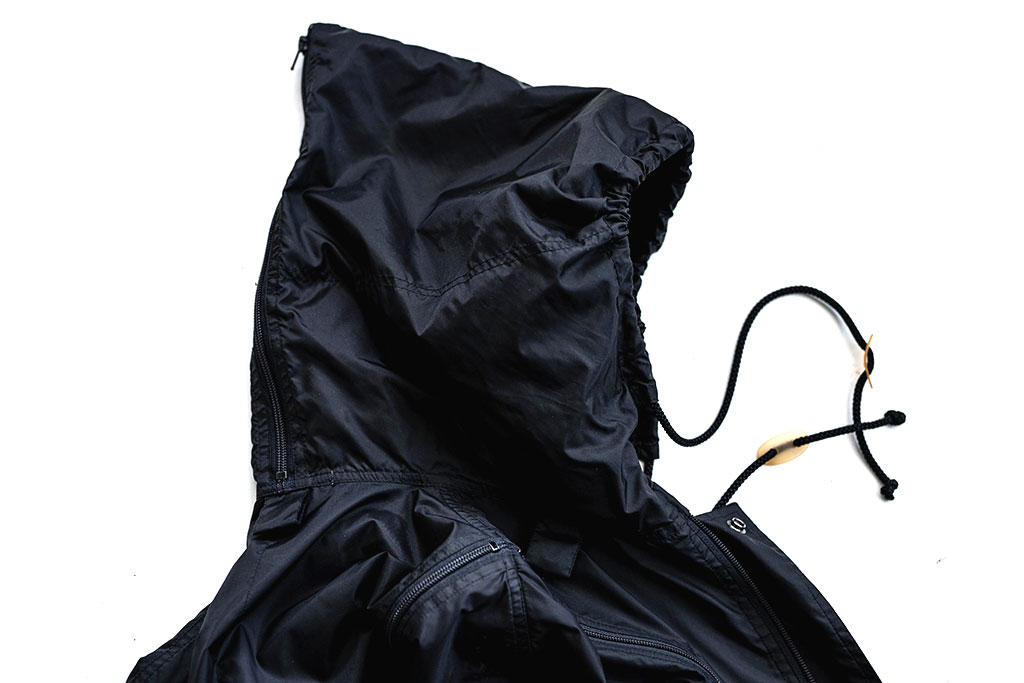
A smaller issue is that the HOME1 uses elastic hems at the sleeve cuffs,with no adjustment possible, which is something that the majority of tech and outdoor shells do offer with zippered, hook and loop- or snap-strap cuffs that give the wearer considerably more fit and comfort options. I personally enjoy the aesthetic of the internal elasticated cuff emerging from the wider sleeve hem, and the tighter fit at the wrist prevents wind blowing up the loose sleeve. While this design is old and less adjustable it does not have performance issues, in my opinion.

Finally, the HOME1 is not especially light. It is not the heaviest parka I own since it is unlined and made from nylon, but certainly there are numerous outdoors and techwear marketed shells that are far lighter than the HOME1 and which will pack better in your bag.
5. Summary
Can the Final Home HOME1 compete head to head in outdoor performance against modern performance shells? No it will never resist rain as well as a membrane jacket, and it wasn’t designed to do so. In urban contexts for the average consumer however, this jacket provides more weather protection than one would expect. The parka’s variable silhouette, its ability to essentially turn into a puffer coat by filling its pockets with insulation, and finally, its immense storage capacity are extremely competitive from a functionality perspective relative to high end technical pieces on the market today.

If the fashion aesthetic of the HOME1 or the brand appeal of Final Home calls to you and you appreciate having extreme storage and a modular silhouette more than you need the best of the best wet weather protection, then the Final Home HOME1 may be an excellent all season parka for you.
As always, the overall utility of a garment is going to depend on the context and use case of each individual consumer. There is no such thing as a universally “best” jacket. It will be up to you to realistically determine what is suitable for your lifestyle and aesthetic preferences.
Fair Use Statement: This article contains images hosted without express permission from their copyright holders. These images are provided for illustration purposes to support an informational objective. This should constitute fair use of any such copyrighted material.
If you enjoyed this article, supporting SHELLZINE by any amount can be made via the link below. Your contribution is completely optional and all funds help cover the website’s growing hosting costs and enable further original content creation without the use of advertisements. Secure payments by all major card types, including Google Pay and Apple Pay, are supported.
